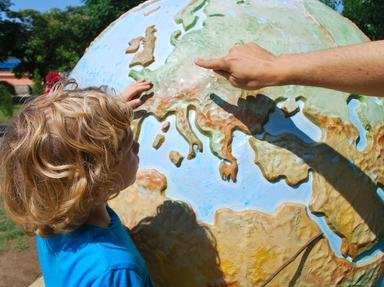Quiz Answer Key and Fun Facts
1. What ocean is circled by earthquake-prone faults called the Ring of Fire?
2. It seems that rivers never run out of water, despite constantly flowing. What's the longest river in the world, shared by 11 countries?
3. The Triangle Trade was a name for sailing routes that delivered merchandise from Europe to Africa, slaves from Africa to the New World, and rum and molasses from the New World to Europe. What ocean were ships sailing on this triangle, back in the 18th century?
4. A big city needs lots of water from surrounding sources. What ancient city used stone aqueducts to bring in water centuries ago? Some are even still standing.
5. Water can be used for sports, and not just swimming. What river has been used for a boat race between Oxford and Cambridge Universities in England every year since 1856?
6. What method of transportation used water to replace roads, and made shipping easier in the days before pavement, cars or railroads took over? One famous example in the US ran to Lake Erie.
7. Some inland bodies of water are almost ten times as salty as the Atlantic or Pacific Oceans. What is one that is so big it's called a sea, and is in the Middle East?
8. What is the largest lake, by area, in Africa? It was named after a queen who ruled the British Empire for most of the 19th century.
9. This river is sacred to Hindus, and important to many of the people in India for practical use, but it has become very polluted from human and industrial wastes. What is it called?
10. This 48-mile canal shortened the ocean route from New York to California, or Ecuador to Europe, by thousands of miles. What is it called?
Source: Author
littlepup
This quiz was reviewed by FunTrivia editor
NatalieW before going online.
Any errors found in FunTrivia content are routinely corrected through our feedback system.

